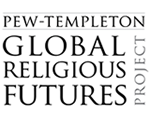A little more than a year ago, the Pew Research Center’s Forum on Religion & Public Life published Mapping the Global Muslim Population, which estimated that there were 1.57 billion Muslims of all ages around the world in 2009. Now, with this report on The Future of the Global Muslim Population, we are taking the next step: using standard demographic methods to project – despite many uncertainties – how many Muslims there are likely to be in each of the world’s 232 countries and territories by 2030.
The Muslim population projections presented in this report are based on the best data we could find on fertility, mortality and migration rates, as well as related factors such as education, economic well-being and use of birth control. Our data sources, methodology and assumptions are laid out in the following pages so that readers can see how the Pew Forum’s demographers arrived at various estimates and can draw their own conclusions about the reliability of the projections. This report not only attempts to look 20 years into the future but also describes measurable trends since 1990 and provides a rich demographic portrait of Muslims around the world today.
After learning in this report that the global Muslim population has been growing in absolute numbers and in percentage terms (as a share of all the world’s people), a reader may ask: Is Islam the world’s fastest-growing religion? If Islam is growing in percentage terms, does that mean some of the world’s other major faiths are shrinking? Is secularism becoming more prevalent, or less? We do not have the answers – yet. But these are the kinds of questions that animate our research, and we are already compiling figures on other religious groups to fill in the bigger picture.
Since mid-2010, Pew Forum staff have been collecting data on the size and distribution of the global Christian population. We hope to publish estimates of the current number of Christians later in 2011, followed in 2012 by projections for the future growth of Christianity and other major world faiths, such as Hinduism, Buddhism, Sikhism and Judaism. We will also look at the size and growth of the population that is not affiliated with any religious tradition.

This effort is part of the Pew-Templeton Global Religious Futures project, which analyzes religious change and its impact on societies around the world. Previous reports produced under this initiative, funded by The Pew Charitable Trusts and the John Templeton Foundation, include Tolerance and Tension: Islam and Christianity in Sub-Saharan Africa (April 2010), which was based on a major public opinion survey in 19 African countries, and Global Restrictions on Religion (December 2009), which gauged the level of social and government restrictions on religion in nearly 200 countries.
The primary researchers for The Future of the Global Muslim Population report are Brian J. Grim, Ph.D., a senior researcher in religion and world affairs and director of cross-national data at the Pew Forum, and Mehtab S. Karim, Ph.D., a visiting senior research fellow in 2008-2010 who came to the Pew Forum from the Aga Khan University in Karachi, Pakistan, where he was a professor of demography. Dr. Karim is now a distinguished senior fellow and affiliated professor in the School of Public Policy at George Mason University.
In preparing this report, the Pew Forum consulted with numerous experts on Muslims in particular countries. Their names and countries of expertise are listed in Appendix C, and we are grateful for their help in ferreting out the best population data. In addition, we are deeply indebted to researchers at the Age and Cohort Change project of the International Institute for Applied Systems Analysis (IIASA) in Laxenburg, Austria, who collaborated with the Pew Forum on some of the most complex population projections: Vegard Skirbekk, Samir KC, Anne Goujon and Marcin Stonawski.
We also received invaluable assistance and feedback on drafts of this report from Carl Haub, senior demographer and Conrad Taeuber Chair of Public Information at the Population Reference Bureau; Amaney Jamal, associate professor of politics at Princeton University and a Pew Forum consultant on global Islam; John Casterline, professor of sociology and director of the Initiative in Population Research at the Ohio State University; Charles F. Westoff, professor of demographic studies and sociology, emeritus, at Princeton University; Mohamed Ayad, regional coordinator of Demographic & Health Surveys and technical director of ICF Macro; and our colleagues in the Pew Research Center’s Social & Demographic Trends project, D’Vera Cohn and Jeffrey S. Passel.
While the data collection and projection methodology were guided by our consultants and advisers, the Pew Forum is solely responsible for the interpretation and reporting of the data.
— Luis Lugo, Director, and Alan Cooperman, Associate Director for Research, Pew Research Center’s Forum on Religion & Public Life




